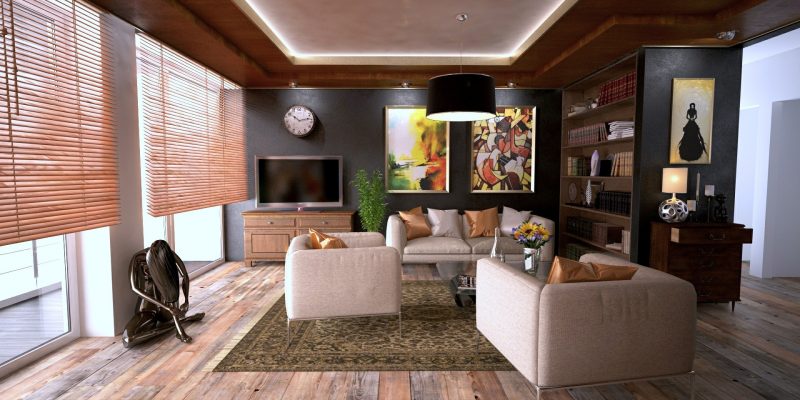Window blinds are an essential part of any home’s décor, providing privacy, light control, and style. They come in different materials, each with unique benefits and drawbacks. Choosing the right material for your window blinds can be overwhelming, but it’s essential to consider your needs and preferences before making a decision.
Types of Materials Used for Window Blinds
1.Wood
Wood blinds are a classic and elegant choice for any home. They are durable, provide excellent insulation, and offer a natural and warm look. Wood blinds come in different types of wood, including basswood, oak, cherry, and bamboo. They are easy to customize and can be stained or painted to match any décor.
2.Faux Wood
Faux wood blinds are made from composite materials, including PVC and vinyl. They are designed to look like real wood but offer better durability and moisture resistance. Faux wood blinds are easy to clean and maintain, making them a popular choice for high-humidity areas like bathrooms and kitchens.
3.Aluminum
Aluminum blinds are affordable, lightweight, and durable. They come in a variety of colors and are easy to clean, making them an ideal choice for high-traffic areas. Aluminum blinds provide excellent light control but do not offer insulation, making them less energy-efficient than other materials.
4.Vinyl
Vinyl blinds are a cost-effective alternative to wood or faux wood blinds. They are moisture-resistant, easy to clean and come in a variety of colors and styles. Vinyl blinds are ideal for high-humidity areas and can withstand extreme temperatures. However, they are not as durable as wood or faux wood blinds and may fade over time.
5.Fabric
Fabric blinds provide a soft and elegant look to any room. They come in different materials, including cotton, silk, and polyester. Fabric blinds provide excellent light control and privacy but are not as durable as other materials. They require regular cleaning and may not be suitable for high-humidity areas.
6.Natural Materials
Natural materials like bamboo, grass, and jute are becoming popular choices for window blinds. They provide a natural and eco-friendly look and are durable and easy to clean. However, natural materials may be more expensive than other materials and require special care.
Comparison of Different Materials
1.Durability
Wood and faux wood blinds are the most durable materials and can last for years with proper care. Aluminum and vinyl blinds are also durable but may not withstand heavy usage. Fabric and natural material blinds are the least durable and may need to be replaced more often.
2.Aesthetics
Wood and faux wood blinds provide a natural and elegant look to any room. Aluminum and vinyl blinds come in a variety of colors and styles but may not offer the same warmth and charm as wood or faux wood blinds. Fabric blinds provide a soft and sophisticated look, while natural material blinds offer a unique and eco-friendly touch.
3.Cost
Vinyl and aluminum blinds are the most affordable materials, making them a popular choice for many homeowners. Wood and faux wood blinds are more expensive but offer better durability and insulation. Fabric and natural material blinds may be the most expensive, depending on the type of material used.
4.Maintenance
Wood and faux wood blinds require regular dusting and occasional deep cleaning. Aluminum and vinyl blinds are easy to clean with a damp cloth or vacuum cleaner. Fabric and natural material blinds may require special care and cleaning to avoid damage.
Best Materials for Different Situations
1.Best for High Humidity Areas
Faux wood and vinyl blinds are the best materials for high-humidity areas like bathrooms and kitchens. They are moisture-resistant and can withstand the damp conditions without warping or rotting.
2.Best for Energy Efficiency
Wood and faux wood blinds are the best materials for energy efficiency. They provide excellent insulation, keeping the room warm in winter and cool in summer. Cellular shades made from fabric are also a good option for energy efficiency.
3.Best for Privacy
Wood, faux wood, and vinyl blinds are the best materials for privacy. They offer complete coverage and light control, ensuring that your privacy is not compromised.
4.Best for Style
Fabric and natural material blinds offer the most options for style and customization. They come in different textures, patterns, and colors, allowing you to create a unique and personalized look for your home.
Conclusion
Choosing the right material for your window blinds can be overwhelming, but it’s essential to consider your needs and preferences before making a decision. Wood and faux wood blinds offer durability and insulation, while vinyl and aluminum blinds are affordable and easy to maintain.
Fabric and natural material blinds provide a unique and stylish touch to any room. If you need expert help, you can contact trusted professionals like Bumble Bee Blinds to help you know what’s best for your home.
Frequently Asked Questions
Q: What is the difference between wood and faux wood blinds?
Wood blinds are made from real wood, while faux wood blinds are made from composite materials like PVC and vinyl. Faux wood blinds are more durable and moisture-resistant than wood blinds.
Q: Are vinyl blinds durable?
Yes, vinyl blinds are durable and moisture-resistant which makes them a popular choice for homeowners.
Q: Can fabric blinds be cleaned easily?
Fabric blinds require special care and cleaning to avoid damage, but they can be cleaned easily with a vacuum cleaner or a damp cloth.
Q: What are the best blinds for a child’s room?
Cordless blinds or motorized blinds are the safest options for a child’s room. They eliminate the risk of strangulation or entanglement.
Q: How often should I replace my blinds?
The lifespan of your blinds depends on the material and how well they are maintained. Wood and faux wood blinds can last for years with proper care, while vinyl and fabric blinds may need to be replaced more often. It’s recommended to replace your blinds every 7-10 years.




















